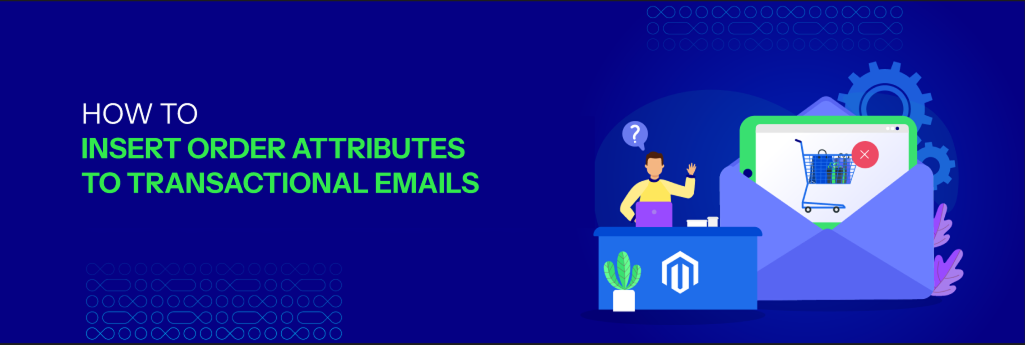How To Configure Chile Localization In Odoo

With a big catalog of 224+ extensions for your online store
Chile is a nation in development in Latin America, and it is one of the many nations striving to be the best it can be. In addition to this, it is a free market economy in which more than half of the country’s economic factors are determined by international trade.
Another connotation is that the mining industry is one of the most vital industries in the country, as it is responsible for the extraction of copper, coal, and nitrate. Manufacturing and agriculture contribute significantly to Chile’s economy, and these fields are considered the country’s two most important economic drivers.
When considering the localization of Odoo to conduct business in Chile, the components of the platform that are related to accounting are going to be the ones that require the most significant adjustment to support business. That’s why today’s tutorial will show you how to configure Chile localization in Odoo. So, let’s dive in!
Why is the idea of using Odoo for the online store in Chile appealing
Let’s begin by gaining a fundamental understanding of what localization entails in the Odoo platform before delving into the Chilean localization aspects. As you are aware, the Odoo Platform is a comprehensive business management platform that can run the firm’s operations on all levels of functioning. In addition to this, it may be thought of as a “one-stop solution” for all of the different parts of business management in a firm. In addition, the completely adaptable ERP system known as Odoo is able to accommodate any localization requirements posed by the organization, as well as those posed by the region or country in question. In point of fact, one of the best aspects of Odoo is its ability to be localized into several languages.
How to configure Chile localization in Odoo
Odoo version 13.0 includes a number of enhancements as well as additions to the Chilean localization. The following modules can be used with this version of the software:
- l10n_cl: implements Chilean accounting features, which are the very minimum for a corporation to legally conduct business in Chile and in accordance with SII (Servicio de Impuestos Internos) legislation and recommendations.
- l10n_cl_edi: Comprises all technical and functional requirements for generating and receiving Electronic Invoices via online service in accordance with SII rules.
- l10n_cl_reports: includes the addition of the reports Propuesta F29 and Balance Tributario (8 columns).
To configure Chile localization in Odoo, follow the step below:
Step 1: Download and activate the Chilean localization modules
To do this, navigate to Apps and look for the Chilean flag. After that, select the Install option inside the Chile E-invoicing module. This module cannot be completed without Chile - Accounting first being completed. Odoo will do an automatic installation of this last one if it has not already been deployed in conjunction with electronic invoicing.

Odoo will automatically install the Chile - Accounting foundation module if you create a new database from scratch and pick Chile as the nation of installation.
Step 2: Set up Company Settings
The initial phase, which occurs after the modules have been deployed, is to configure your business’s data. You will need to include all of the data and pieces that are required for Electronic Invoice in addition to the basic information. The Accounting > Settings > Chilean Localization menu is where you will find the quickest approach to configure this feature.
Odoo’s following setup and capabilities are only accessible if your business has already obtained Certification in the SII - Sistema de Facturación de Mercado, which allows you to automatically produce electronic invoices from your ERP and send them to the SII. Make sure you let your Account Manager know if your firm has not yet completed this certification. Achieving this certification requires a unique process that takes place outside of Odoo, so you will need to let your Account Manager know about this.
- Fiscal Information: In accordance with the SII registration, provide the required financial information for your company while taking care to follow the instructions provided for each section.
- Electronic Invoice Data: Choose your environment and fill in the required legal details, then enter the email address where you want to receive bills from your suppliers and the alias under which you want to send invoices to your customers. All of these pieces of information are necessary to generate an electronic invoice, and they are part of the primary information that is required.

Prepare the DTE incoming email server configuration: It is essential to define the DTE incoming email server in consideration of the following configuration in order to ensure that you are able to receive emails from your clients, including their claims and acceptances.
In preparation for your Go-live, you should make sure that you have archived or removed from your inbox any emails that are associated with vendor bills that do not need to be handled in Odoo.
Certificate: A digital certificate with the extension pfx is necessary in order to generate an electronic invoice signature. To do so, navigate to this area of the page, load your file, and then enter your password.
It is possible for multiple users to share the same certificate. In the event that this is the case, make sure to keep the user field blank so that all of your billing users can make use of the same one. If, on the other hand, you need to limit the usage of the certificate to a specific user, all you have to do is define the users that can use it in the certificate.
Note: Depending on the type of the certificate, it’s conceivable that the field Subject Serial Number won’t load automatically in some circumstances. This is something to keep in mind. In the event that this is the case, you have the ability to manually modify this field by providing it with the RUT that represents the Certificate’s legal representative.
Financial Reports: The Propuesta F29 report requires two values to be defined as part of the company configuration, and those values are as follows:
Multicurrency: The website mindicador.cl, which is based in Chile, is the one that publishes the country’s official exchange rate. This service may be found in the currency rate configuration, where you can also select a time period at which the rates will be updated automatically.
Chart of accounts: The chart of accounts is automatically installed whenever the localization module is used because it is a component of the collection of data that is contained in that module. The following areas have the accounts mapped automatically:
- Taxes.
- Default Account Payable.
- Default Account Receivable.
- Transfer Accounts.
- Conversion Rate.
Step 3: Configure Master Data
The identifying types determined by the SII are now accessible on the Partner form as part of the Chilean localization project. These particulars are required for the vast majority of transactions.
In Chile, the document type that is connected with business transactions between customers and vendors is determined according to the Taxpayer Type. When creating a customer, you must check that this value is filled in, and this field ought to be defined in the partner form:
You are responsible for defining the email address that is going to appear as the sender of the electronic invoice to your client, as well as the Industry description, as part of the information that is included in the electronic Invoice and delivered to the customer.

The taxes, along with their associated bank accounts and configuration settings, are generated automatically as a function of the localization module.
There are many different kinds of taxes in Chile, but the following are the most common ones:
- VAT: This refers to the standard amount of VAT, and there are other rates available for it.
- ILA (Impuesto a la Ley de Alcholes): Taxes for alcoholic drinks. It operates at a rate that is unique.
The value-added tax (VAT) can take on a variety of forms depending on the purchasing transactions. This will be accomplished in Odoo by using the buy fiscal positions that are preset by default.
Some accounting transactions, such as invoices and bills from vendors, are categorized by document types set by the government fiscal authorities in some Latin American nations, including Chile (In Chile’s case: SII).
The document type is vital information that needs to be displayed in the printed reports, and it also needs to be easily identifiable within the set of invoices as well as the set of account transfers.
Each document type can have a unique sequence per firm. When the localization module is installed, the data for the Document Type will be created automatically, and it will include the country in which the document can be used. This information is included as part of the localization process.
Because the information that is necessary for the document kinds is already there by default, the user is not required to enter any information into this view:
There are various sorts of documents that are deactivated by default but can be brought back into use when necessary. The following factors will be used to decide the document format for each transaction:
- The Journal’s connection to the Invoice, including an indication of whether or not the Journal uses documents.
- The condition that was imposed varied according to the kind of issues and receivers (ex., the Type of fiscal regimen of the buyer and the type of fiscal regimen of the vendor).
Step 4: Modify your Odoo Journals
When establishing sales journals, you are going to need to fill in the following information:
Point of sale type: If the Sales journal is going to be used for electronic documents, you need to make sure that the Online option is selected. You can pick the option Manual instead if the journal is used for invoices imported from a prior system or if you are utilizing the SII site “Facturación MiPyme.” In any of these cases, the journal will be updated manually.

Use Documents: The value entered into this field determines whether or not the journal will make use of document types. It is only applicable to Purchase and Sales journals that have the potential to be tied to the various sets of document types that are accessible in Chile. All of the sales journals that are created will make use of documents by default.
It is vitally crucial to establish the default debit and credit accounts for the Chilean localization, as doing so is essential to support one of the use cases for debit notes.
Step 5: Activate the CAF code for your Odoo
For each document type that is delivered to your clients, you are needed to have a CAF, which stands for a Folio Authorization Code. The CAF is a file that the SII gives to the Emisor that contains the permitted folio and sequence for the electronic invoicing documents.
Your organization can submit multiple requests for folios and obtain multiple CAFs, each of which is connected with a different range of folios. Because the CAFs are shared across all of the journals, you need to have just one active CAF per document type for it to be implemented across all of the journals.

In order to add a CAF, just follow these steps: Once you have the CAF files, you will need to correlate them with a document type in Odoo. To accomplish this, simply follow the steps below:
- Access to the Accounting, Settings, and CAF Pages
- Send the file to the server.
- Please help the CAF.
The status will change to “In Use” once it has been loaded. At the present time, the invoice number will be assigned to the first folio in the sequence whenever a transaction is used to generate this sort of document. When creating the initial transaction, make sure that the next valid folio is specified. This is especially important if you have already utilized some folios in your prior system.
Wrapping Up
We hope this tutorial will help you understand how to configure Chile localization in Odoo. Since it was still in the process of being developed at the beginning of this year, the Odoo platform has been growing steadily. Today, localization in all its forms is becoming increasingly important in countries still in the process of development. The following is a list of the components of Odoo that can be configured to meet the requirements of your company’s operations in Chile based on the norms and standards of the market.
The inevitable incorporation of digitalization into the traditional practices of Chilean companies has arisen as a direct result of the country’s rapid technological and telecommunication progress in recent years. According to the SII, which is the Chilean Tax System, the fact that invoices are now transmitted electronically is more helpful to companies and the nations than the traditional method was.
Increase sales,
not your workload
Simple, powerful tools to grow your business. Easy to use, quick to master and all at an affordable price.

Recent Tutorials

How to insert Order Attributes to Transactional Emails - Mageplaza
How to add Order Attributes to PDF Order Template - Mageplaza
Setup Facebook Product Feed for Magento 2 - Mageplaza
Explore Our Products:
Stay in the know
Get special offers on the latest news from Mageplaza.
Earn $10 in reward now!





